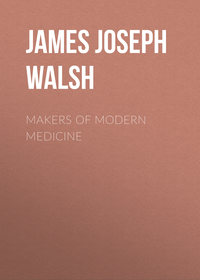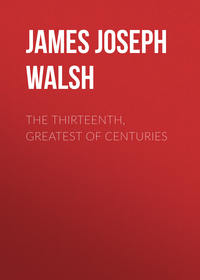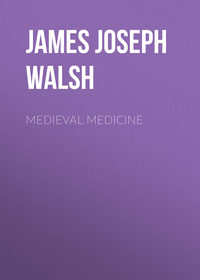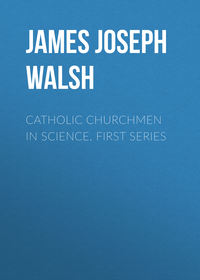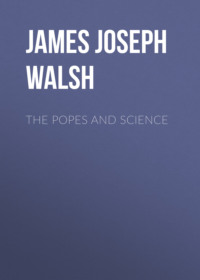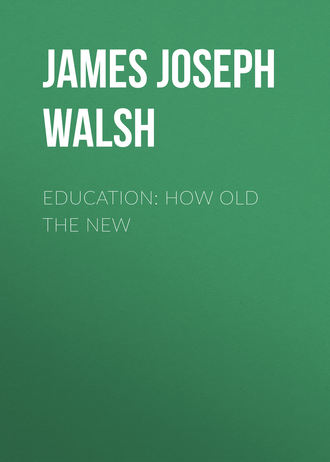 полная версия
полная версияEducation: How Old The New
Probably even more significant than the tradition that Euclid did his work at this first modern university, and that besides being a mathematician he was a man of very practical ideas in education, is the fact that he was appreciated by the men of his time and that his work was looked up to with highest reverence by his contemporaries and immediate successors as representing great achievement. It is not ever thus. Far from resenting in any way the magnificent synthesis that he had made of many rather vague notions in mathematics before his time, his contemporaries united in doing him honor. They realized that his teaching created a proper scientific habit of mind. Pappus says of Apollonius that he spent a long time as a pupil of Euclid at Alexandria and it was thus that he acquired a thorough scientific habit of mind. After Euclid's time the value of his discoveries as a means of training the mind was thoroughly appreciated. The Greek philosophers are said to have posted on the doors of their schools "Let no one enter here who does not know his Euclid." In the midst of the crumbling of old-fashioned methods of education in the introduction of the elective system, in the modern time, many of our best educators have insisted that at least this portion of mathematics, Euclid's contribution to the science, should be a required study, and most educators feel, even when there is question of law or medical study, that one of the best preparations is to be found in a thorough knowledge of Euclid.
Almost as wonderful as the work of Euclid was that of the second great mathematician of the Alexandrian school, Archimedes, who not only developed pure mathematics but applied mathematical principles to mechanics and proved besides to have wonderful mechanical ability and inventive genius. It was Archimedes of whom Cicero spoke so feelingly in his "Tusculan Disputations," when about a century and a quarter after Archimedes' death, he succeeded in finding, his tomb in the old cemetery at Syracuse during his quaestorship there. How curious it is to think that after so short a time as 127 years from the date of his death Archimedes was absolutely forgotten by his fellow-Syracusans, who resolutely denied that any trace of Archimedes' tomb existed. This stranger from Rome knew much more of Archimedes than his fellow-citizens a scant four generations after his time. Not how men advance, but how they forget even great advance that has been made, lose sight of it entirely at times and only too often have to rediscover it, is the most interesting phase of history. Cicero says, "Thus one of the noblest cities of Greece and one which at one time had been very celebrated for learning, knew nothing of the monument of its greatest genius until it was rediscovered for them by a native of Arpinum"–Cicero's modest designation for himself.
We have known much more about Archimedes' inventions than about his mathematical works. The Archimedian screw, a spiral tube for pumping water, invented by him, is still used in Egypt. The old story with regard to his having succeeded in making burning mirrors by which he was enabled to set the Roman vessels on fire during the siege of Syracuse, used to be doubted very seriously and, indeed, by many considered a quite incredible feat, clearly an historical exaggeration, until Cuvier and others in the early part of the nineteenth century succeeded in making a mirror by which in an experiment in the Jardin des Plantes in Paris wood was set on fire at a distance of 140 feet. As the Roman vessels were very small, propelled only by oars or at least with very small sail capacity, and as their means of offence was most crude and they had to approach surely within 100 feet of the wall to be effective, the old story therefore is probably entirely true. The other phase of history according to which Archimedes succeeded in constructing instruments by which the Roman vessels were lifted bodily out of the water, is probably also true, and certainly comes with great credibility of the man of whom it is told that, after having studied the lever, he declared that if he only had some place to rest his lever, he could move the world.
The well-known story of his discovery in hydrostatics, by which he was enabled to tell the King whether the royal goldsmiths had made his crown of solid gold or not, is very well authenticated. Archimedes realized the application of the principle of specific gravity in the solution of such problems while he was taking a bath. Quite forgetful of his state of nudity he ran through the streets, crying "Eureka! Eureka! I have found it! I have found it!" There are many other significant developments of hydrostatics and mechanics, besides specific gravity and the lever, the germs of which are at least attributed to Archimedes. He seems to have been one of the world's great eminent practical geniuses. That he should have been a product of Alexandria and should even have been a professor there would be a great surprise if we did not know Alexandria as a great scientific university. As it is, it is quite easy to understand how naturally he finds his place in the history of that university and how proud any modern university would be to have on the rolls of its students and professors a man who not only developed pure science but who made a series of practical applications that are of great value to mankind. Such men our modern universities appropriately claim the right to vaunt proudly as the products of their training.
When we analyze something of the work in pure mathematics that was accomplished by Archimedes our estimation of him is greatly enhanced. His work "On the Quadrature," that is the finding of the area of a segment of the parabola, is probably his most significant contribution to mathematical knowledge. His proof of the principal theorem in this is obtained by the "method of exhaustion," which had been invented by Eudoxus but was greatly developed by Archimedes. This method contains in itself the germ of that most powerful instrument of mathematical analysis in the modern time, the calculus.
Another very important work was "The Sphere and the Cylinder." This was more appreciated in his own time, and as a consequence, after his death the figure of a sphere inscribed in a cylinder was cut on his tomb in commemoration of his favorite theorem, that the volume of the sphere is two-thirds that of the cylinder and its surface is four times that of the base of the cylinder. It was by searching for this symbol, famous in antiquity, that Cicero was enabled to find his tomb according to the story that I have already related.
Within the last few years the reputation of Archimedes in pure mathematics has been greatly enhanced by the discovery by Professor Heiberg of a lost work of the great Alexandrian professor in Constantinople. Archimedes himself stated in a dedication of the work to Eratosthenes the method employed in this. He says: "I have thought it well to analyze and lay down for you in this same book a peculiar method by means of which it will be possible for you to derive instruction as to how certain mathematical questions may be investigated by means of mechanics. And I am convinced that this is equally profitable in demonstrating a proposition itself, for much that was made evident to me through the medium of mechanics was later proved by means of geometry, because the treatment by the former method had not yet been established by way of a demonstration. For of course it is easier to establish a proof, if one has in this way previously obtained a conception of the questions, than for him to seek it without such a preliminary notion. . . . Indeed, I assume that some one among the investigators of to-day or in the future, will discover by the method here set forth still other propositions which have not yet occurred to me." On this Professor Smith comments: "Perhaps in all the history of mathematics no such prophetic truth was ever put into words. It would almost seem as if Archimedes must have seen as in a vision the methods of Galileo, Cavalieri, Pascal, Newton, and many other great makers of the mathematics of the Renaissance and the present time."
Many other distinguished professors of mathematics have, since this declaration of Archimedes came under their notice, declared that he must have had almost a prophetic vision of certain developments of mathematics and especially applied mathematics and mechanics and their relation to one another, that were only to come in much later and indeed comparatively modern times. Undoubtedly Archimedes' works proved the germ of magnificent development not only immediately after his own time but in the long-after time of the Renaissance, when their translation awakened minds to mathematical problems and their solutions that would not otherwise have come.
We know much less of the life of the third of the great trio of teachers and students of Alexandria, Apollonius of Perga. Perhaps it should be enough for us to know that his contemporaries spoke of him as "the great geometer," though they were familiar with Euclid's book and with Archimedes' mighty work. Apollonius was surely a student of Alexandria for many years and he was probably also a professor of mathematics there. He developed especially what we know now as conic sections. His book on the subject contains practically all of the theorems to be found in our text-books of analytical geometry or conic sections of the present time. It was developed with rigorous mathematical logic and Euclidean conclusiveness. These three men show us beyond all doubt how finely the mathematical side of the university developed.
After Archimedes the greatest mechanical genius of the University of Alexandria was Heron. To him we owe a series of inventions and discoveries in hydrostatics and the construction of various mechanical toys that have been used in the laboratories since. There is even a little engine run by steam–the aeolipile–invented by him, which shows how close the old Greeks were to the underlying principles of discoveries that were destined to come only after the development of industries created a demand for them in the after time. Heron's engine is a globe of copper mounted on pivots, containing water, which on being heated produces steam that finds its way out through tubes bent so as to open in opposite directions on each side of the globe. The impact of the escaping steam on the air sets the globe revolving, and the principle of the turbine engine at work is clear. We have used steam for nearly 200 years always with a reciprocating type of movement, so that to apply energy in one direction the engine has had to move its parts backwards and forwards, but here was a direct-motion turbine engine in the long ago. Our great steamboats, the Lusitania and the Mauretania, now cross the ocean by the use of this principle and not by the reciprocating engine, and it is evident that it is along these lines the future developments of the application of steam are to take place.
Another extremely interesting invention made by Heron is the famous fountain called by his name, and which still is used to illustrate principles in pneumatics in our classrooms and laboratories. By means of condensed air water is made to spring from a jet in a continuous stream and seems paradoxically to rise higher than its source. Probably his best work in the domain of physics is that on pneumatics in which are given not only a series of discussions, but of experiments and demonstrations on the elasticity of air and of steam. These experiments could only have been conducted in what we now call a physical laboratory. Indeed these inventions of his are still used in laboratories for demonstration purposes. While we may think, then, that the foundation of laboratories was reserved to our day, there is abundant evidence for their existence at the University of Alexandria. We shall return to this subject a little later, when the evidence from other departments has been presented, and then it will be clear, I think, that the laboratory methods were favorite modes of teaching at the University of Alexandria and were in use in nearly all departments of science both for research and for demonstration purposes.
The work of the other great teacher at Alexandria which was to influence mankind next to that of Euclid, was not destined to withstand the critical study of succeeding generations, though it served for some 1,500 years as the basis of their thinking in astronomy. This was the work of Ptolemy, the great professor of astronomy at Alexandria of the first century after Christ. It is easy for us now to see the absurdity of Ptolemy's system. It is even hard for us to understand how men could have accepted it. It must not be forgotten, however, that it solved all the astronomical problems of fifteen centuries and that it even enabled men, by its application, to foretell events in the heavens, and scientific prophecy is sometimes claimed to be the highest test of the truth of a system of scientific thought. Even so late as 1620 Francis Bacon refused to accept Copernicanism, already before the world for more than a century, because it did not, as it seemed to him, solve all the difficulties, while Ptolemy's system did. As great an astronomer as Tycho Brahe living in the century after Copernicus still clung to Ptolemy's teaching. It must not be forgotten that when Galileo restated Copernicanism, the reason for the rejection of his teaching by all the astronomers of Europe almost without exception, was that his reasons were not conclusive. They preferred to hold on to the old which had been so satisfying than to accept the new which seemed dubious. Their wisdom in this will be best appreciated from the fact that none of Galileo's reasons maintained themselves.
Though his system has been rejected, still Ptolemy must be looked up to as one of the great teachers of mankind and his work the "Almagest" as one of the great contributions to human knowledge. The fact that he represented a climax of astronomical development at Alexandria some four centuries after the foundation of that university, serves to show how much that first modern university occupied itself for all the centuries of its highest prestige, with physical science as well as with mathematics. Astronomy, physics, especially hydrostatics and mechanics, were all wonderfully developed. Generations of professors had given themselves to research and to the publication of important works quite as in the modern time, and Alexandria may well claim the right to be placed beside any university for what it accomplished in physical science, and rank high if not highest in the list of great research institutions adding new knowledge to old, leading men across the borderland of the unknown in science and furnishing that precious incentive to growing youth to occupy itself with the scientific problems of the world around it.
The most important part of the scientific work of the University of Alexandria to my mind remains to be spoken of, and that is the medical department. It is a well-known law in the history of medicine that, whenever medical schools are attached to universities in such a way that students who come to the medical department have been thoroughly trained by preliminary studies and have such standards of scholarship as obtain in genuine university work, then great progress in medicine and in medical education is accomplished. This was eminently the case at Alexandria. The departments of the arts, of linguistics and of philosophy were gathered around the great building known in Greek as the Mouseion, a word that has come to us through the Latin under the guise of Museum. This temple of the Muses contained collections of various kinds and near it was situated the great library. Not far away was the Serapeum, or Temple of Serapis, the Goddess of Life, around which were centred the biological sciences, and close by was the medical school. As teachers for this medical school some of the greatest physicians of the time were secured by the first Ptolemy and a great period in medical history began.
The practical wisdom guiding the Ptolemys in the organization of this medical school will be best appreciated from the fact that they took the first step by inviting two distinguished physicians, the products of the two greatest medical schools of the time, to lay the foundations at Alexandria. They were probably the best investigators of their time and they had behind them fine traditions of research, thorough observation and conservative reasoning and theorizing on scientific subjects. Erasistratos was a disciple of Metrodoros, the son-in-law of Aristotle. He had studied for a time under another great teacher, Chrysippos of Cnidos. We are likely to know much more of Cos than of Cnidos because of the reputation in the after time of Hippocrates, whose name is so closely connected with Cos that the two are almost invariably associated, but Cnidos was one of the great university towns of the later Greek civilization. Eudoxus the astronomer, Ctesias the writer on Persian history, and Sostratos the builder of the great lighthouse, one of the seven wonders of the world, the Pharos at Alexandria, were products of this university. Its medical school was famous when Cos had somewhat declined, and Chrysippos was one of the leading physicians of the world and one of the acknowledged great teachers of medicine when Erasistratos studied under him at Cnidos, and obtained that scientific training and incentive to original research which was to prove so valuable to Alexandria.
His colleague, Herophilos, was quite as distinguished as Erasistratos and owed his training to the rival school of Cos. Whether it was intentional or not to secure these two products of rival schools for the healthy spirit of competition that would come from it, and because they wanted to have at Alexandria the emulation that would naturally be aroused by such a condition, is not known, but there can be no doubt of the wisdom of the choice and of the foresight which dictated it. Herophilos had studied medicine under Praxagoras, one of the best-known successors of Hippocrates. While distinguished as a surgeon he had more influence on medicine than almost any man of his time, except possibly Erasistratos. He was, however, a great anatomist and, above all, a zoologist who, according to tradition, had obtained his knowledge of animals from the most careful zootomy of literally thousands of specimens. His fair fame is blackened by the other tradition that he practised vivisection on human beings–criminals being turned over to him for that purpose by the Ptolemys, who were deeply interested in his researches. The traditions in this matter, however, serve to confirm the idea of his zeal as an investigator and his ardent labors in medical science. Tertullian declares that he dissected at least 600 living persons. We know that he did much dissection of human cadavers and there is question whether Tertullian's statement was not gross exaggeration due to confusion between dissection and vivisection.
Both of these men did some magnificent work upon the brain. This being the first period in the history of humanity when human beings could be dissected freely, it is not surprising that they should take up brain anatomy with ardent devotion, in the hope to solve some of the many human problems that seemed to centre in this complex organ. Before this anatomy had been learned mainly from animals, and as human beings differ most widely from animals by their brain, naturally, as soon as the opportunity presented itself, anatomists gave themselves to thorough work on this structure where so many discoveries were waiting to be made. After the brain and nervous system the heart was studied, and Erasistratos' description of its valves, of its general structure and even of its physiology, show how much he knew. To know something of the work of these two anatomists is to see at once what is accomplished in a university medical school where medical science, and not the mere practice of medicine alone, is the object of teachers and students. I have told the story of this in my address before the graduates of the St. Louis Medical University Medical School, and here I shall simply refer you to that.7
Of course all these studies at the university could not be conducted without laboratory equipment. Of itself the dissecting room is a laboratory and until very recent years it was the only laboratory that most of the medical schools had. The numerous experiments in vivisection, if they really took place, required special arrangements and could only be conducted in what we now call a laboratory of physiology. This is not idle talk but represents the realities of the situation. Other laboratories there must have been. It would be quite impossible to conceive of a man like Archimedes carrying on his work, especially of the application of mathematical principles to mechanics, of the demonstration of mechanical principles themselves and of the invention of the many interesting machines which he made, without what we call laboratory facilities. The Ptolemys were interested in his work, they supplied him with a place to do it, many of his advanced students at least must have been interested in this work so that, as I see it, there was what we would now call a physical laboratory in connection with his teaching at the University of Alexandria.
What we know about the development of zoology under Erasistratos and Herophilos would seem to indicate that there must have been such special facilities for the investigation of zoological problems as we would call a laboratory of physiology. A magnificent collection of plants was made for the university and these were studied and classified, and while we hear nothing of their dissection, there were at least botanical rooms for methodical study, if not botanical laboratories. Ptolemy's work represented the culmination of astronomical information which had been gathered for several centuries. This could only be brought together in what we would now call an observatory and this represents another laboratory of physical science. Our laboratory work, therefore, must have been anticipated to a great extent. We must not forget that our university laboratories are only a couple of generations old altogether and that they represent a very recent development of educational work. It is extremely interesting, therefore, to find them anticipated in germ at least, if not in actuality, at the first modern university of which we have sufficiently complete records to enable us to appreciate just the sort of work that was being done and the ways and modes of its education.
I think that even this comparatively meagre description of the first university of which we have knowledge makes it very clear that Alexandria deserves the name of the First Modern University. It resembled our own in so many ways that I, for one, find it impossible to discover any essential difference between them. At Alexandria they anticipated every phase of modern university education. Their literature was studied from a scientific standpoint. They devoted themselves to an overwhelming extent to the study of the physical sciences and mathematics, their professors were inventors, developers of practical applications of science, experts to whom appeal was made when important scientific questions had to be settled, and their teaching was done with demonstrations and a laboratory system very like our own. Nothing that I know illustrates better the tendency of human achievement not to represent advance but to occur in cycles than the story of this first modern university. That is why I have tried to tell it to you as an exquisite illustration of How Old the New Is in Education.
MEDIAEVAL SCIENTIFIC UNIVERSITIES
"Qui ad pauca respiciunt faciliter pronuntiant." –AN OLD PHILOSOPHER.
[Those who know little readily pronounce judgment.]
MEDIAEVAL SCIENTIFIC UNIVERSITIES 8
Probably nothing is more surprising to any one who knows the history of science and of scientific education than the attitude of mind of the present generations, educated as they are mainly along scientific lines, toward the supposed lack of interest of preceding generations in science. Our scholars and professors seem to be almost universally of the opinion that the last few generations are the first who ever devoted themselves seriously to the study of science, or who, indeed, were free enough from superstitions and persuasions and beliefs of many kinds to give themselves up freely to scientific investigation. In the light of what we know or, perhaps I should say, what we are coming to know now with regard to the educational interests of the men of the various times, this would be an amusing, if it were not an amazing, presumption on our part. Over and over again in the world's history men have been interested in science, both in pure science and in applied science, in the culture sciences and in the practical sciences.





